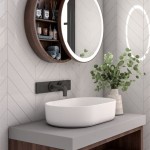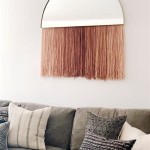How to Screen Mirror iPhone 7 to PC
Screen mirroring technology allows users to project the display of their mobile devices onto larger screens, such as computers. This capability is particularly useful for presentations, gaming, viewing photos and videos, and even troubleshooting iPhone issues. Mirroring an iPhone 7 to a PC can be accomplished through various methods, each with its own advantages and disadvantages. This article outlines the steps involved in several popular screen mirroring techniques, detailing the necessary software, hardware, and configurations.
Utilizing AirPlay Compatible Software for Screen Mirroring
AirPlay, Apple's proprietary wireless streaming protocol, is primarily designed for use within the Apple ecosystem. However, third-party software can bridge the gap, enabling AirPlay functionality on a Windows PC, allowing for the mirroring of an iPhone 7 screen. These applications effectively emulate an Apple TV receiver on the computer, capturing the AirPlay stream from the iPhone.
One popular option is software like AirServer or Reflector. These applications are designed to receive AirPlay streams and display them on the PC screen. The installation process is relatively straightforward. First, download and install the chosen software on the PC. It is important to download the software from the official website to avoid potential malware or security risks.
After installation, launch the software. Most AirPlay receiver applications will display instructions on the screen, providing a clear guide on how to connect the iPhone. The PC and the iPhone 7 must be connected to the same Wi-Fi network for AirPlay to function correctly. This is a crucial requirement as AirPlay relies on the local network to transmit the data.
On the iPhone 7, swipe up from the bottom edge of the screen to access the Control Center (on iOS 11 and earlier) or swipe down from the top-right corner (on iOS 12 and later). Look for the "Screen Mirroring" or "AirPlay" option. Tap this option, and a list of available AirPlay receivers on the network will appear. The name of the PC, as registered by the AirPlay receiver software, should be visible in this list.
Select the PC's name from the list. A passcode may appear on the PC screen. If prompted, enter this passcode on the iPhone to complete the connection. Once the connection is established, the iPhone 7 screen will be mirrored on the PC. The mirrored display will reflect everything that is shown on the iPhone, including app usage, navigation, and media playback.
Using AirPlay receiver software provides a wireless solution, eliminating the need for cables. However, the performance can be affected by the Wi-Fi network's stability and bandwidth. Lag or dropped connections may occur if the network is congested or experiencing interference.
It's also worth noting that some AirPlay receiver software requires a paid license for full functionality. Free trial versions may be available, but these often have limitations such as watermarks or time restrictions.
Leveraging USB Connection with Third-Party Applications
An alternative to wireless screen mirroring is to use a USB connection. Several third-party applications enable screen mirroring via a USB cable, providing a more stable and often faster connection than Wi-Fi-based solutions. These applications work by installing a client on the PC that communicates with a companion app, or a driver that interfaces directly with the iPhone via the USB port.
Examples of such applications include iTools, AnyTrans, and ApowerMirror. The installation process generally involves downloading and installing the software on the PC. Following the installation, connect the iPhone 7 to the PC using a Lightning to USB cable.
The first time the iPhone is connected, a prompt will appear on the iPhone asking to "Trust This Computer." It is essential to tap "Trust" to allow the PC to access the iPhone's data. This authorization is crucial for the screen mirroring application to function correctly.
The software on the PC will then detect the connected iPhone. Depending on the application, it may automatically begin mirroring the screen or require manual initiation. Some applications may also require the installation of a companion app on the iPhone itself. This companion app assists in establishing the connection and transmitting the screen data to the PC.
Once the connection is established, the iPhone 7 screen will be displayed on the PC. USB connections tend to offer lower latency and a more stable connection compared to Wi-Fi mirroring, making them suitable for tasks that require real-time interaction, such as gaming or presentations.
However, using a USB connection requires the physical presence of a cable, which may be less convenient in certain situations. Additionally, some applications may have limitations on the features available in the free version, requiring a paid license for full functionality.
Troubleshooting connection issues may involve ensuring that the latest version of iTunes is installed on the PC, as some screen mirroring applications rely on Apple's drivers to communicate with the iPhone. Additionally, ensuring that the USB cable is in good condition and properly connected is essential.
Using QuickTime Player for Basic Screen Recording and Display
A lesser-known feature of QuickTime Player, a default application on macOS and available for download on Windows, allows for basic screen recording and display of iOS devices connected via USB. While not specifically designed for screen mirroring, QuickTime Player can be used to display the iPhone 7 screen on a PC, especially for recording demos or taking screenshots.
To use QuickTime Player for this purpose, connect the iPhone 7 to the PC using a Lightning to USB cable. Ensure that iTunes is installed and that the iPhone is trusted on the computer by tapping "Trust This Computer" when prompted.
Open QuickTime Player on the PC. In the menu bar, select "File" and then choose "New Movie Recording." A window will appear showing the PC's webcam feed. Next to the record button, there is a small arrow. Click this arrow to reveal a dropdown menu.
In the dropdown menu, under "Camera" and "Microphone" options, the iPhone 7 should be listed. Select the iPhone 7 as both the camera and microphone source. The QuickTime Player window will now display the iPhone 7 screen.
QuickTime Player provides a basic display of the iPhone screen. It can be used to record the screen, which is useful for creating tutorials or capturing gameplay footage. However, it lacks advanced features such as wireless connectivity or fine-grained control over the mirroring process.
The primary limitation of QuickTime Player is its lack of dedicated screen mirroring features. It is primarily intended for recording purposes. Latency may be higher compared to dedicated screen mirroring applications, and the overall experience may not be as seamless.
Nevertheless, QuickTime Player offers a simple and readily available solution for displaying the iPhone 7 screen on a PC, particularly for users who already have the application installed or require a basic recording capability.
In summary, mirroring an iPhone 7 to a PC can be achieved through various methods, each with its own strengths and weaknesses. AirPlay receiver software provides a wireless solution, while USB connections offer greater stability and lower latency. QuickTime Player offers a basic option for screen recording and display. The optimal method depends on the specific needs and preferences of the user.

Top 3 Ways To Screen Mirror Iphone 7 Pc

How To Mirror Iphone Windows Pc Laptop Mac Full Guide

How It Mirrors Screen Mirroring Iphone 7 Plus

How To Wirelessly Mirror Iphone Screen Pc Mac Without Any Client Side App Redmond Pie

How To Mirror Your Iphone Screen On A Computer Pcmag

How To Mirror Iphone Screen Windows Pc No Mac Required

How It Mirrors Screen Mirroring Iphone 7 Plus

How To Mirror Iphone Windows 10

How To Mirror Iphone Screen Windows Pc Laptop Mirroring

How To Mirror An Iphone S Screen On Pc Tom Guide








